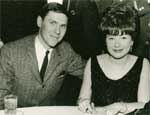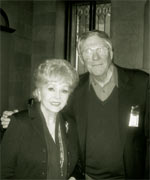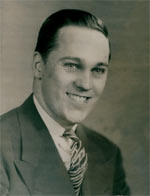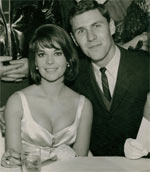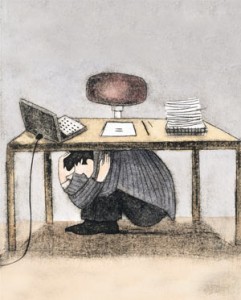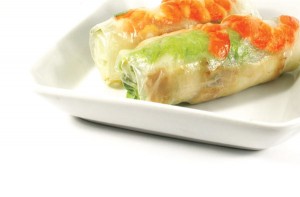 By my calculations, the moon rose in the earth’s heavens roughly 15,730 times from the time Neil Armstrong first set foot on its surface until he died on August 25th of this year. During those 43 years, I’d often look up at night and spot the Sea of Tranquility. A momentary thought would form, reflecting that man had walked upon it and the universe seemed a whole lot “smaller” as a result. It made me feel comfortable somehow, and proud to be an American.
By my calculations, the moon rose in the earth’s heavens roughly 15,730 times from the time Neil Armstrong first set foot on its surface until he died on August 25th of this year. During those 43 years, I’d often look up at night and spot the Sea of Tranquility. A momentary thought would form, reflecting that man had walked upon it and the universe seemed a whole lot “smaller” as a result. It made me feel comfortable somehow, and proud to be an American.
Like all baby boomers, my formative years revolved around two great opposing national agendas, which were flip sides of the same “Cold War” coin. One was the Vietnam War, which polarized the nation in dramatic and often violent ways. The other was the “space race to the moon,” a grand competition for world technological dominance over communism, which unified the nation.
From the NASA space program arose a new crop of national heroes called astronauts, leading the charge with ever more daring exploits. Of these larger-than-life space jockeys with the “right stuff,” Neil Armstrong clearly occupied the top spot. A former naval aviator and civilian test pilot, he was the first human to walk on a planetary body other than earth. Many members of my generation hailed him as an icon for the ages. In hindsight, much of this adulation was crafted by NASA to keep its programs funded. But Armstrong didn’t buy into the hero label one bit despite the constant media and public adulation.
Neil’s quiet dignity reflected his solid mid-western values. These were rooted in the Great Depression and World War II eras, when the survival of democracy was under tremendous pressure and Americans worked together to achieve success. He was humble but determined to find the answers he sought. He believed that education and hard work are the keys to personal happiness and professional success. There was also a dash of pocket-protector geek in him plus a dab of calculated risk-taking when he thought the rewards outweighed the risks.
Neil was a diehard aviation enthusiast. His heroes were pioneers from the early days of American aviation such as the Wright Brothers and Jimmy Doolittle. As a youngster, he was enthralled with flying, and took his first flight in a Ford Trimotor before he turned six. Armstrong earned his flight certificate at age 15, before he had an automobile driver’s license. He was active in the Boy Scouts, eventually earning the rank of Eagle Scout. Neil graduated from Purdue University in 1955 with a Bachelor’s degree in aeronautical engineering and later was awarded a Master’s degree from the University of Southern California.
Armstrong initially served his nation as a naval aviator during the Korean War, flying 78 missions from the deck of the aircraft carrier USS Essex. After the war, his career blossomed as a civilian test pilot for NACA (the predecessor to NASA) in the 1950’s, including seven flights in the supersonic X-15.
Finally, in 1962, he was selected in the second group of NASA astronauts and the first civilian. In 1966, Neil flew his first space mission in Gemini 8 as the Command Pilot. He demonstrated his coolness under pressure by making a safe emergency landing in the Pacific Ocean when the space craft suffered a major in-flight malfunction.
Of course, in 1969, he was the Commander of the epic Apollo 11 lunar landing mission and became the first human to walk on the moon’s surface. His extraordinary composure under difficult circumstances saved the mission. As the lunar module was descending into a boulder-strewn area, Neil manually took control of the ungainly craft and made a safe landing with only seconds of fuel to spare. Hundreds of millions of people around the world breathlessly watched TV on July 20, 1969 as the Eagle landed on the moon and Neil calmly set foot on its surface. We didn’t exhale until four days later when the spacecraft Columbia splashed down in the Pacific Ocean, and was recovered by the USS Hornet. He was overwhelmed by the outpouring of public demand for his presence. Instead of embracing the trappings of wealth, he chose to become a college teacher.
My connection to Neil Armstrong begins with the USS Hornet Museum in 2008, while writing the book called Hornet Plus Three. I needed information that could only be provided by one of the astronauts inside the spacecraft as it descended into the earth’s atmosphere. I mailed a letter to Neil’s “generic” post office box in Lebanon, Ohio, seeking clarification on a specific issue about the Apollo 11 flight.
I waited many days for a reply, sometimes taking the mail directly from the hands of the postman. On May 6 (my 60th birthday), I turned my computer on in the morning and did a casual glance through the emails. Lo and behold – there was one from Neil Armstrong! I was as excited as a small child on Christmas morning and could hardly wait to open it:
“Hello Bob –
The recovery, from my point of view, went extremely well. The command module had come to rest in the “stable 2” (inverted) position, so we had the experience of going through the procedure to bring it to an upright position. Clancy and his gang did an excellent job of securing the CM, getting us safely out of the spacecraft, completing all the procedures for safeguarding earth from lunar pathogens, and getting us into the basket to be lifted up to the recovery helicopter. The helicopter gave us an excellent ride and smooth landing on the Hornet. And the welcome by the Hornet and its crew, and the welcome by President Nixon, was memorable. We were convinced it had been a perfect recovery.
As a matter of fact, I didn’t remember that the return to Pearl was 2 and 1/2 days. Dr. Carpentier took good care of us, the food and drink was excellent (compared to our rations during the flight) and we had a great deal of work to do (getting our thoughts recorded as preparation for all the post-flight debriefings for which we were obligated).
The quarantine (in Houston) was a necessary nuisance but valuable for providing an atmosphere conducive to completing all our post-flight paperwork and interaction with later Apollo flight crews, systems specialists, flight controllers, etc. The quarantine process, while a nuisance, provided us the opportunity to do the work that needed to be done. In view of the intense public interest in the flight, that would have been very difficult without the quarantine requirement. And the quarantine was a constant reminder that Apollo 11 had been a success in reaching the national goal of landing men on the surface of the moon and returning them safely to earth.
All the best, Neil”
From that day on, Neil generously gave his time in helping me understand the flight and recovery issues of Apollo 11. He shared a significant amount of personal information, only asking that I respect his privacy and not give out his personal contact information. He even volunteered to write the foreword for the book, but pressing issues about new Orion spacecraft caused him to just write a cover blurb.
The highlight of my museum career came a year later, shortly before we launched the new book (with fellow moonwalker Buzz Aldin aboard the Hornet Museum) when I unexpectedly found this email in my inbox:
“Hi Bob – I returned to my office from some travel and found HORNET PLUS THREE awaiting. I must say, it is an exceptional job. And it fills a gaping hole in the Apollo history. Dick did a fine job on the foreword. Thanks for your tenacity and perseverance. Well done !! Neil”
Occasionally, our conversations would stray into other areas. This past May, the Hornet Museum was planning a major event to pay tribute to General Jimmy Doolittle and his Tokyo Raiders. I emailed Neil to see if he would like to make a contribution to our event guide. He immediately responded:
“Thanks, Bob – I had the great pleasure of knowing and working with General Doolittle. In addition to his many military achievements in war and peace, he was, in intellect, character, thoughtfulness and wisdom, also four star. He was, by any measure, a great American. My best, Neil”
After numerous emails and telephone conversations over the years, I finally met him in person at the Congressional Gold Medal Ceremony on Capitol Hill in November 2011. He was a humble and caring individual with a very sharp mind, a true “grass roots American” who sloughed off all the fame and celebrity that everyone wanted to heap on him. Even though he was surrounded by the rich and powerful in Washington, his face lit up when he saw the USS Hornet recovery team and stole away to have a private moment with us.
I am proud to say that Neil Armstrong remains one of my heroes. He will be held in high esteem throughout human history, not because he was a celebrity but because he was a great human being who dared to explore new horizons in the service of mankind.
Godspeed, Neil.
